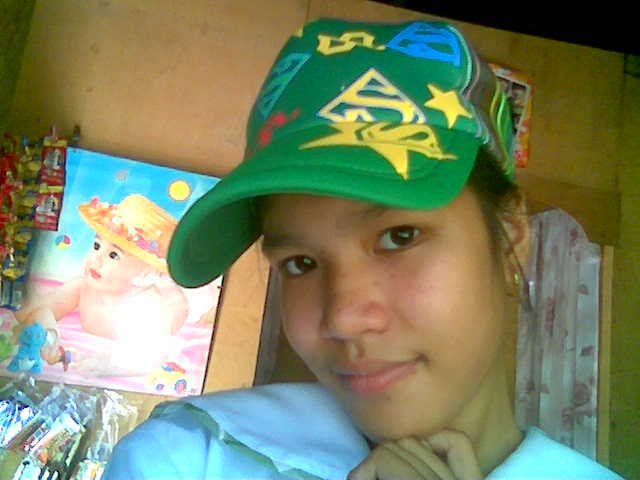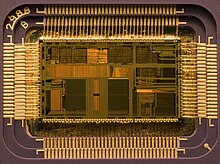PLEASE FOLLOW MY BLOG..........
SHENETS BLOGSPACE
Thursday, September 15, 2011
Evolution of the Internet
1. What happen during 1969?
1969: Arpanet
Arpanet was the first real network to run on packet switching technology. On October 29, 1969, computers at Stanford and UCLA connected for the first time and became the first hosts of what became the Internet a few years later.
Arpanet was the first real network to run on packet switching technology. On October 29, 1969, computers at Stanford and UCLA connected for the first time and became the first hosts of what became the Internet a few years later.
2. What happen during 1971?
1971: Email
Email was first developed in 1971 by Ray Tomlinson, who also made the decision to use the "@" symbol to separate the user name from the host name/domain name.
Email was first developed in 1971 by Ray Tomlinson, who also made the decision to use the "@" symbol to separate the user name from the host name/domain name.
3. What happen during 1977?
1977: The PC modem
1977 was a big year for the development of the Internet as we know it today. It is the year the first PC modem, developed by Dennis Hayes and Dale Heatherington, was introduced and initially sold to computer hobbyists.
1977 was a big year for the development of the Internet as we know it today. It is the year the first PC modem, developed by Dennis Hayes and Dale Heatherington, was introduced and initially sold to computer hobbyists.
4. What happen during 1979?
1979: MUD – The earliest form of multiplayer games
The ancestors of World of Warcraft and Second Life were developed in 1979, and were called MUD, short for MultiUser Dungeon. MUDs were entirely text-based virtual worlds, combining elements of role-playing games, interactive, fiction, and online chat.
The ancestors of World of Warcraft and Second Life were developed in 1979, and were called MUD, short for MultiUser Dungeon. MUDs were entirely text-based virtual worlds, combining elements of role-playing games, interactive, fiction, and online chat.
5. What happen during 1984?
1984: Domain Name System (DNS)
The domain name system made addresses on the Internet more human-friendly compared to its numerical IP address (a numeric address written as four numbers separated by periods) counterparts.
The domain name system made addresses on the Internet more human-friendly compared to its numerical IP address (a numeric address written as four numbers separated by periods) counterparts.
6. What happen during 1989?
1989: The proposal for the World Wide Web
The proposal for the World Wide Web was written by Tim Berners-Lee, which was originally published in the March issue of MacWorld and then redistributed in May 1990. It was written to persuade CERN that a global hypertext system was in CERN’s best interest.
The proposal for the World Wide Web was written by Tim Berners-Lee, which was originally published in the March issue of MacWorld and then redistributed in May 1990. It was written to persuade CERN that a global hypertext system was in CERN’s best interest.
7. What happen during 1990?
1990: First commercial dial-up ISP
In this year, Arpanet cease to exist while the first commercial dial-up Internet provider, The World came to the scene.
In this year, Arpanet cease to exist while the first commercial dial-up Internet provider, The World came to the scene.
1990: World Wide Web protocols finished
The code for the World Wide Web was written by Tim Berners-Lee, based on his proposal from the year before, along with the standards for HTML, HTTP, and URLs.
The code for the World Wide Web was written by Tim Berners-Lee, based on his proposal from the year before, along with the standards for HTML, HTTP, and URLs.
8. What happen during 1991?
1991: First web page created
Year 1991 brought some major innovations to the world of the Internet. The first web page was created with the intent to explain what the World Wide Web is.
Year 1991 brought some major innovations to the world of the Internet. The first web page was created with the intent to explain what the World Wide Web is.
1991: First content-based search protocol
Also in the same year, Gopher was launched—the first search protocol that examined file contents instead of just file names.
Also in the same year, Gopher was launched—the first search protocol that examined file contents instead of just file names.
1991: MP3 becomes a standard
The MP3 file format was also accepted as a standard in 1991. MP3 files, being highly compressed, later become a popular file format to share songs and entire albums via the internet.
The MP3 file format was also accepted as a standard in 1991. MP3 files, being highly compressed, later become a popular file format to share songs and entire albums via the internet.
9. What happen during 1993?
1993: Governments join the fun
In 1993, both the White House and the United Nations came online, marking the beginning of the .gov and .org domain names.
In 1993, both the White House and the United Nations came online, marking the beginning of the .gov and .org domain names.
10. What happen during 1996?
1996: First web-based (webmail) service
In 1996, HoTMaiL (the capitalized letters are an homage to HTML), the first webmail service, was launched.
In 1996, HoTMaiL (the capitalized letters are an homage to HTML), the first webmail service, was launched.
11. What happen during 1998?
Monday, June 13, 2011
"OUR ACTIVITY TODAY"
Kasama namin ang taga 1-SPA Media Arts ngayong tanghali.
Ito ang mga iilang ginawa namin ngayong tanghali:
Nagpakilala kami sa 1-SPA.
Nag warm up kami kasama ng mga 1-SPA.
Tiningnan namin ang mga litratong pampapukaw ng imahinasyon.
Kali ay nag post sa aming blog.
Sunday, June 5, 2011
"First day of school"
My first day at school is a day I will never forget. I'm happy in my first day of school because i meet again my classmate and i still passed the SPA. I'm happy because i saw again my favorite teacher, like Erwin Bulabog and Mrs. Liza Madera. And I'm glad also because we have a new teacher. But I'm sad this day because there are some of my classmate who did not pass in the SPA. Sir Airbulls is the only teacher who assigned as a job to do in our media arts class.
All in all my first day of school is very nice. :-)
Sunday, January 30, 2011
CPU "CPU" redirects here. For other uses, see CPU (disambiguation). microprocessor (actual size: 12×6.75 mm) in its packaging. Early CPUs were custom-designed as a part of a larger, sometimes one-of-a-kind, computer. However, this costly method of designing custom CPUs for a particular application has largely given way to the development of mass-produced processors that are made for one or many purposes. This standardization trend generally began in the era of discrete transistor mainframes and minicomputers and has rapidly accelerated with the popularization of the integrated circuit (IC). The IC has allowed increasingly complex CPUs to be designed and manufactured to tolerances on the order of nanometers. Both the miniaturization and standardization of CPUs have increased the presence of these digital devices in modern life far beyond the limited application of dedicated computing machines. Modern microprocessors appear in everything from automobiles to cell phones and children's toys KEYBOARD It is one of the most important parts of a computer which is used to enter commands, text, numerical data and other types of data by pressing the keys on the keyboard. A user talks with a computer through input devices such as keyboard and mouse. Input devices are used to enter data to a computer. The entered data then converted into machine language so that a CPU understands the data or instruction comes through the input devices. It is one of the most important parts of a computer which is used to enter commands, text, numerical data and other types of data by pressing the keys on the keyboard. A user talks with a computer through input devices such as keyboard and mouse. Input devices are used to enter data to a computer. The entered data then converted into machine language so that a CPU understands the data or instruction comes through the input devices.  MOUSE It is a device used for computer input. It points and click on icons, menus, command buttons or activates something on a computer. The GUI (Graphical user interface) of current applications and programs are user friendly and easier to navigate using computer mouse.  MONITOR  What are the Functions of the Monitor of the Computer? Computers by Svadilfari (http://www.flickr.com/photos/22280677@N07/2264355654/) A computer monitor is a display adapter that displays information processed by the computer's video card. When a video card or graphics card converts binary information from 1s and 0s into images, these images are displayed onto the directly connected monitor. AVR  - also known as the "Automatic Voltage Regulator" - It is designed to automatically maintain a constant voltage level. - It regulates the sudden flow of electric current from AC supply to the PC. - It may use an electromechanical mechanism, or passive or active electronic components. - Depending on the design, it may be used to regulate one or more AC or DC voltages. |
Thursday, January 27, 2011
1. Animation- A set of pictures simulating movement when played in a series.
2. API (Application Programing Interface)- An interface for letting a program communicate w/ another program.
3. Bandwidth- A measure for the speed (Amount of data) you can send through an Internet connection. The more bandwidth, the faster the connection.
4. BMP (Bit Map)- A format for storing images.
5. Browse- Term to describe a user's movement across the web, moving from page to page via hyperlink , using a web browser.
6. Browser- The program that display websites on your computer. Example are Microsoft's Internet Explorer, Netscape, and Mozilla Firefox.
7. Database- Data stored in a computer in such a way that a computer program can easily retrieve and manipulate the data.
8. Dial- up connection- In web terms: a connection to Internet via telephone and modern.
9. Domain Name- The name that identifies a website (like: smart schools.com).
10. Download- To transfer a file from a remote computer to a local computer. I n web terms: to transfer a file from a web server to a wet client.
11. File- Document or set of instruction.
12. FTP- (File transfer Protocol)- Is a standard program used to upload your website from the program where it was created, to a server. One of the most common methods for sending files between two computer.
13. GIF (Graphics Interchange Format) A compressed format for storing images developed by CompuServe. One of the most common image format on the Internet.
14. HTML (Hypertext Markup Language)- HTML is the language of the web. HTML is a set of tags that are used to define the content layout and the formatting of the web document. Web browsers use the HTML tads to define ho to display the text.
15. HTTP (Hypertext Transfer Protocol)- The standard set of rules for sending text files across the Internet. It requires an HTTP client program at one end and an HTTP server program at the other end.
Subscribe to:
Posts (Atom)



